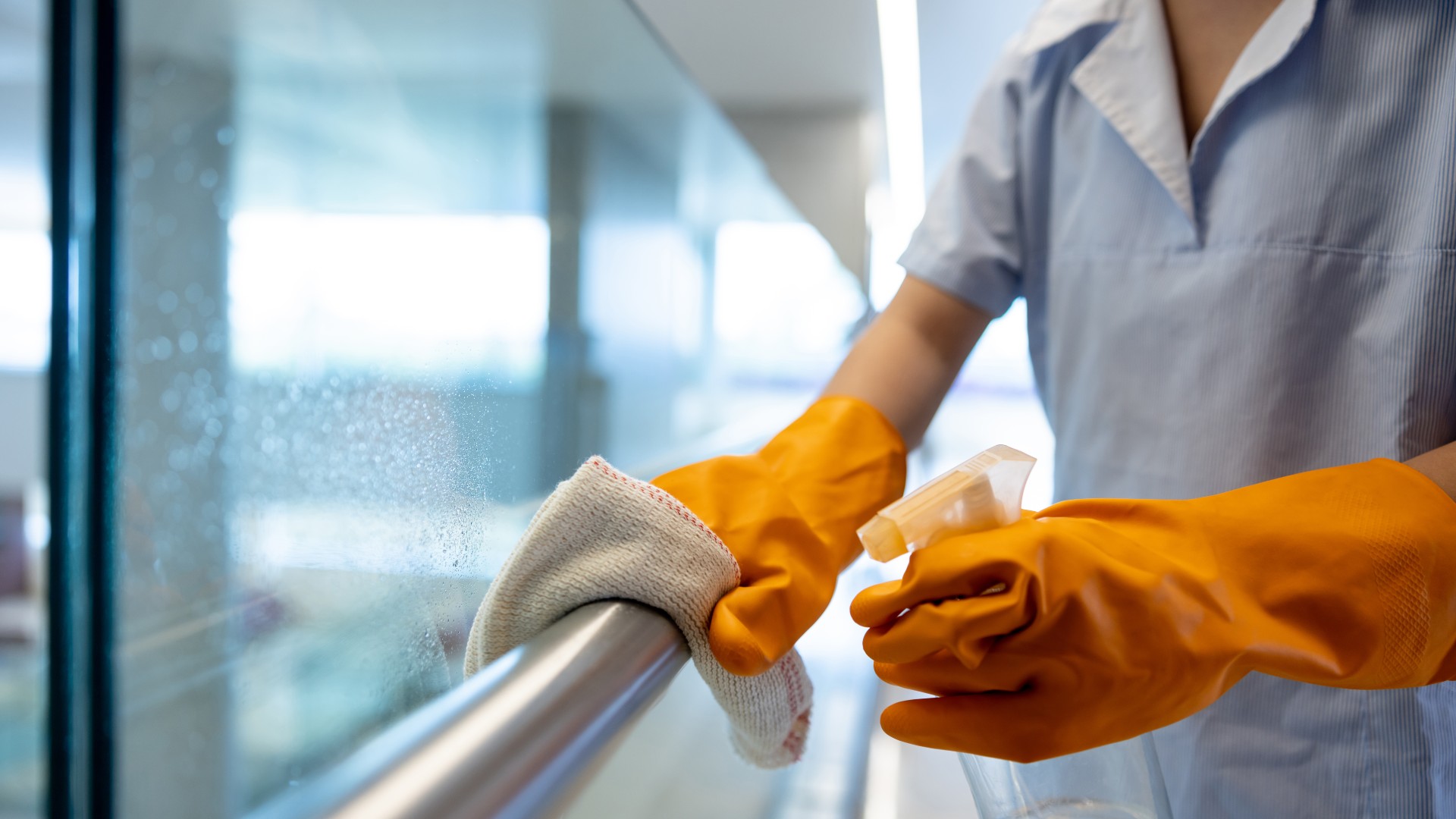Cleaning product residues may be driving a deadly superbug's antibiotic resistance
When exposed to low levels of disinfectants and antiseptics in the lab, a bacterium that sickens thousands in the U.S. every year becomes more tolerant to antibiotics.
Most microbes perish when exposed to common cleaning products, but the residue from those disinfectants may be driving deadly bacteria to become resistant to antibiotics, a lab study suggests.
Biocides, which include disinfectants and antiseptics, are chemicals that are widely used in households, hospitals and manufacturing to kill disease-causing microorganisms such as bacteria. However, there are rising concerns that their widespread use may be spurring antibiotic resistance by pressuring bacteria to evolve in ways that make them less vulnerable to the drugs.
In the new study, published Monday (Oct. 9) in the journal Nature Microbiology, scientists focused on one species of multidrug-resistant bacteria called Acinetobacter baumannii, which sickens thousands of patients in U.S. hospitals each year. The researchers revealed that low levels of several common biocides — for example, those that would be left over on surfaces and that are hard to remove from the environment — can push the germ to gain tolerance to antibiotics. Specifically, A. baumannii grows resistant to antibiotics that target the inside of bacterial cells, preventing them from making new DNA or proteins.
"Our finding suggests that biocides at low concentration can compromise antibiotic potency and lead to the development of antibiotic resistance," Liping Li, lead study author and research fellow at Macquarie University in Sydney, told Live Science in an email. "We propose that further investigation and survey about the side effects of residual biocides in real world scenarios are necessary to warrant that we are using these precious chemicals wisely and safely," he added.
Related: Dangerous 'superbugs' are a growing threat, and antibiotics can't stop their rise. What can?
A. baumannii normally live in soil and water. It is an opportunistic pathogen, meaning that it doesn't usually harm healthy people but may seize the opportunity to attack those with weakened immune systems or to enter hospitalized patients' bodies via open wounds. A. baumannii can cause serious diseases — including pneumonia, bloodstream infections, and the nervous-system infection meningitis — and various strains have developed resistance to multiple antibiotics.
The authors of the new study introduced mutations into the genome of A. baumannii to determine which genes would help the bacteria survive when treated with 10 biocides. By exposing the mutant bacteria to different cleaners, they identified several of these survival genes; some coded for proteins in the wall that surrounds bacterial cells, and others coded for proteins inside the cells, including proteins involved in metabolism or respiration, the process by which cells make fuel.
Get the world’s most fascinating discoveries delivered straight to your inbox.
According to the team's experiments, one key way these biocides kill bacteria is by disrupting the electrical activity across their cell membranes; this hampers the cells' ability to make fuel. But if the concentration of biocide isn't high enough, this won't kill the bacteria — instead, it makes it stronger, they found.
Indeed, in seven of the 10 biocides tested, low levels of the products were enough to disrupt this membrane activity but not kill the bacteria. What's more, this low-level exposure made it so antibiotics that targeted the insides of cells couldn't infiltrate the bacteria as easily. Two particularly bad offenders appeared to be the biocides, chlorhexidine and benzalkonium.
Antibiotics that target the cell envelope were not affected and could still kill the microbe. The authors hypothesized that this is because the inside-targeting antibiotics were less likely to be imported, likely because this process requires energy from the cell, which would make them less potent against A. baumannii.
The study was conducted only in lab dishes, not in a real-world setting like a hospital. However, the authors noted that this suggests it may be time to talk about "biocide stewardship." So-called antibiotic stewardship is a critical effort to stop the misuse of antibiotics and thus limit the pressure that normally pushes bacteria toward resistance. The authors think biocide stewardship may also be necessary.
The "principal concern" of biocide stewardship would be to figure out how to reduce the amount of residual biocide in the environment after cleaning, to prevent bacteria from being exposed to too-low concentrations of the cleaners and thus stop them from gaining resistance, the authors wrote.

Emily is a health news writer based in London, United Kingdom. She holds a bachelor's degree in biology from Durham University and a master's degree in clinical and therapeutic neuroscience from Oxford University. She has worked in science communication, medical writing and as a local news reporter while undertaking NCTJ journalism training with News Associates. In 2018, she was named one of MHP Communications' 30 journalists to watch under 30.



